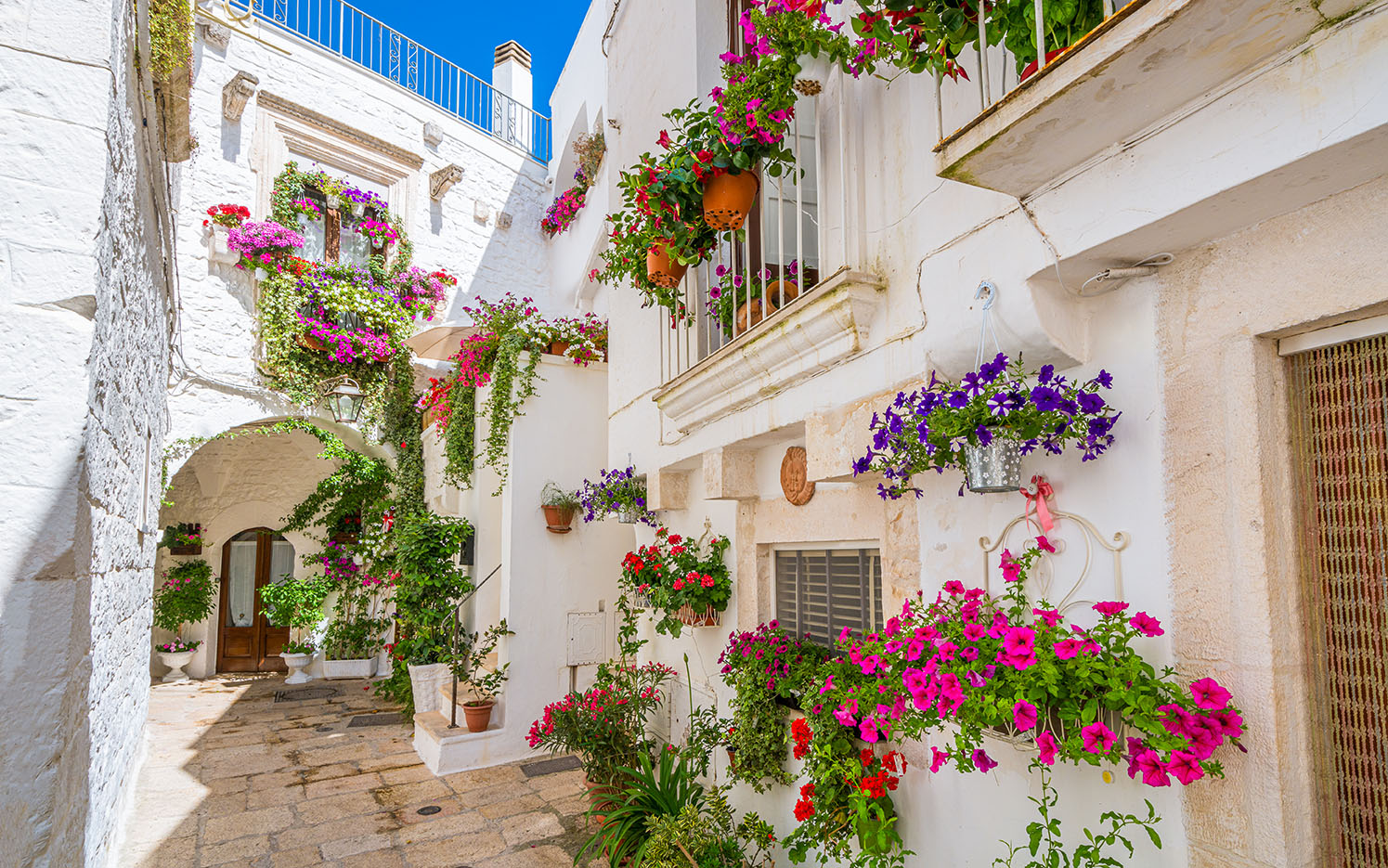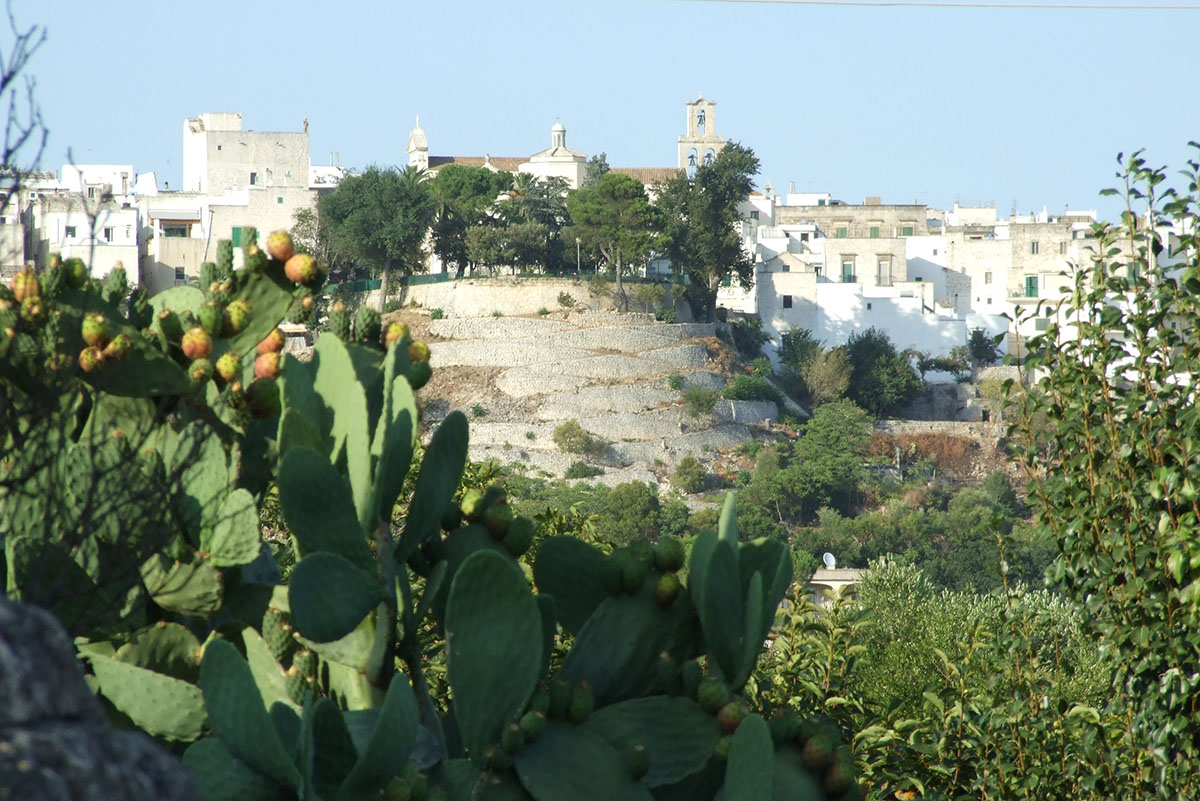We are in Cisternino
one of the most fascinating small italian town
UPAL is based in Cisternino, territory full of history and traditions. It was already populated in the prehistoric ere since the Palaeolithic to the Neolithic. As witness there are historical hunting and gathering finds preserved inside the Civic Museum.
The name would have originated from Cis – Sturninum, or on this side of Sturni, the old Japigio center located near the city of Ostuni. Traditions say that Sturni is the name given as a tribute to Sturno by Diomede with which survived the Trojan war.


Cisternino was conquered by the Romans, who settled in the area lauding the healthiness of its land and its air. After them the Byzantines came, making the main church, Chiesa Madre, dedicated to St. Nicholas in the fourteenth century. Into the apulian romanesque style church you can still admire the stone sculpture of the Madonna del Cardellino, created on the 1597s, and a crucifix from the 300s.
Next to the church, there is the rectory, where is exhibited a Madonna della Madia wooden sculpture, and an eighteenth-century canvas in which, at the foot of Saints Quirico and Giuditta, patrons of the city, there is a perspective view of the city.
The houses that are located within the historical center of Cisternino, whitewashed, have mostly preserved their colors, the towers and part of the walls.


Cisternino overlooks the Itria Valley, rich in vineyards, olive trees, almond trees and trulli: typical buildings obtained with flat limestone, with a circular plan on the outside and square on the inside.
Stone walls were built, and are still built today, using the stone obtained from the simple need to release the agricultural land from the large number of stones that hindered crops or grazing.
We are in Cisternino
one of the most fascinating small italian town
UPAL is based in Cisternino, territory full of history and traditions. It was already populated in the prehistoric ere since the Palaeolithic to the Neolithic. As witness there are historical hunting and gathering finds preserved inside the Civic Museum.
The name would have originated from Cis – Sturninum, or on this side of Sturni, the old Japigio center located near the city of Ostuni. Traditions say that Sturni is the name given as a tribute to Sturno by Diomede with which survived the Trojan war.


Cisternino was conquered by the Romans, who settled in the area lauding the healthiness of its land and its air. After them the Byzantines came, making the main church, Chiesa Madre, dedicated to St. Nicholas in the fourteenth century. Into the apulian romanesque style church you can still admire the stone sculpture of the Madonna del Cardellino, created on the 1597s, and a crucifix from the 300s.
Next to the church, there is the rectory, where is exhibited a Madonna della Madia wooden sculpture, and an eighteenth-century canvas in which, at the foot of Saints Quirico and Giuditta, patrons of the city, there is a perspective view of the city.
The houses that are located within the historical center of Cisternino, whitewashed, have mostly preserved their colors, the towers and part of the walls.


Cisternino overlooks the Itria Valley, rich in vineyards, olive trees, almond trees and trulli: typical buildings obtained with flat limestone, with a circular plan on the outside and square on the inside.
Stone walls were built, and are still built today, using the stone obtained from the simple need to release the agricultural land from the large number of stones that hindered crops or grazing.

